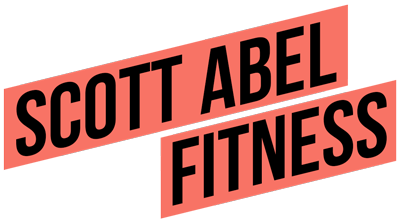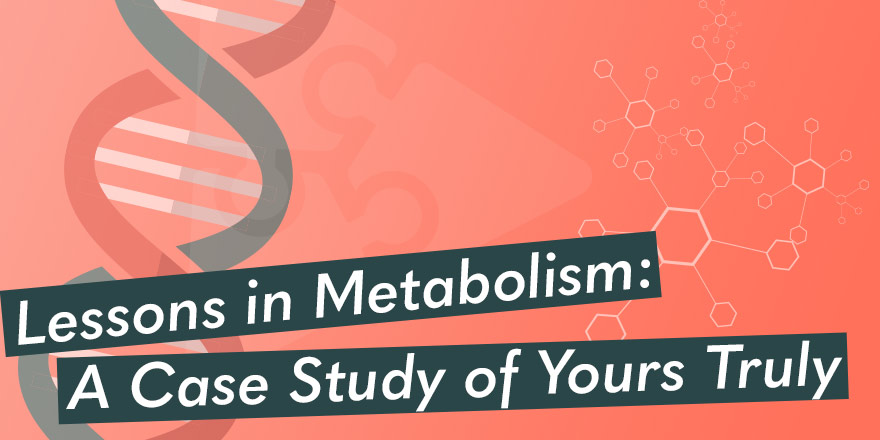“Metabolism” has not truly been understood in our industry, but it’s one of these industry buzzwords that capture people’s attention.
Today, in order to explore what metabolism really is—and what it’s all about—I want to share my own personal (and recent) example, and maybe highlight some extra things you might not have known about metabolism.
I’m going to share a story about major back surgery, that often frustrating, long road to recovery, and how and why my metabolism continued “revving” despite huge amounts of total downtime. (Oh, and by “downtime” I don’t mean I only did cardio or light weights or something. I mean downtime. I mean sustained periods of time when I was literally lying doing on the floor in order to answer client emails!)
So, here’s the background:
Back in 2000, I had major back surgery. I had a radical double laminectomy where two discs were removed from my lower back. By the time the surgery date rolled around there was so much damage, the surgeons couldn’t replace the discs with prosthetic materials or take any of the other usual measures that can help long-term recovery and back health. To be transparent: yes, I’m sure a lot of this damage was related to my steroid use during those hardcore bodybuilding years, and the amount of trauma I was able to inflict on myself as a result.★
★ This foreshadows a lesson below about metabolism. Later I will talk about the immediate vs. the residual vs. the cumulative realms of time. Well, in terms of what I was doing to my body, I was “seemingly” able to recover in the immediate and residual realms of time—but I was doing damage to myself in the cumulative realm of time. The pounding I was able to give my body was adding up. The result? Long-term back issues. So let this serve as a warning!
Now, all that said, despite some of those complications, the surgery was a major success, and within two years I honestly felt 10 years younger. It was during that time that I also came up with the fundamentals of MET training, partly to help avoid the pounding and damage that traditional hardcore bodybuilding had done to my body previously.
Still, despite some of the changes to my training routine, the risk loomed for re-injury; especially when training with heavy weights and high intensity.
Around Christmas time in 2013, I was replacing warm-up weights back on to the dumbbell rack in my “dungeon” and down I went with the same major pain I’d had before. I took it easy, but it wasn’t over.
That night, while simply rolling over in my sleep, I caused even more damage, and I woke up screaming in pain. I fell out of bed. I wanted to call 911, but couldn’t even reach the phone or the phone cord. By then I was screaming and I can remember gritting my teeth with tears of pain in my eyes. The pain only ended when I literally passed out from the pain; I woke up the next morning slumped against the door to the walk-in closet in my bedroom.
During the ensuing weeks I went to the doctor and ended up getting an MRI done, but the news wasn’t good. First, the discs in my spine were deteriorating because of my age and former steroid use. Second, there wasn’t much that could be done, so I spent the next 12 weeks crawling up and down my stairs whenever I needed to get to my office and answer client emails.
I was told surgery probably wouldn’t help much and might things worse. The advice? “Live with it as best you can.” They told me that—longer term—I could expect my back to go out on me again at any time.
Suffice it to say that this made training intelligently and safely a priority! Obviously, I wasn’t pleased about this, but I tried to re-frame it as a great opportunity to learn even more about using training for prevention and to look at training in totally different terms.
Despite the ominous warnings from doctors, I had no major issues for 13 years, which I view as positive. Still, though, do the math: 2000 plus 13 years means that I had a very scary and very painful experience in 2013. For now, though, let’s just fast forward to this past summer, 2018.
Back in mid-June of this year I was picking up a weight at the gym, and… I felt it.
Let me tell you, when you have an injury like this, I knew right away I was in trouble. It wasn’t pain equal to that experience of 2013, but it was enough to require a lay-off.
I was again reduced to crawling up and down my stairs to answer emails, do my podcasts, make videos, etc. I could only do grocery shopping because I could hold on to the grocery cart to offset my weight so I could shuffle my way through the store.
I couldn’t workout. I couldn’t even go for my walks. I became a couch potato for about five weeks completely sedentary.
So… what happened to metabolism? How did I change my diet?
I’m talking about lots of downtime where I’m not just taking some “time off from training,” but time off where I’m barely walking.
What did I do in terms of diet?
Did I adjust my diet? Did I cut my calories?
Long story short… I continued following my Cycle Diet.
Central themes of the Cycle Diet include maintaining a tolerable level of hunger, reading your own biofeedback from the “inside-out” (not just applying some arbitrary set of numbers from the “outside-in”), and, yes—for many people the most intriguing part of the diet—including weekly huge refeeds or “cheat days” as needed and dictated by your own biofeedback.
To recap, then:
- I took time off completely from training. No walks, no cardio, nothing.
- I continued my usual diet, but I did so in a way where I maintained “tolerable hunger.”
- I assessed tolerable hunger by reading my own internal cues. (In other words, I listened to my body.)
- I continued weekly cheat days (and enjoyed them too).
What happened?
I gained no weight and my physique stayed the same. In other words, despite a month off, I kept eating just like I did when I was 18 years younger (and was training accordingly!).
Again: No changes.
In fact, one of my complete refeed weeks happened during this most recent period. I ate whatever—and however much—I wanted… for a week.
When I share that story, I hear comments like these:
- “Well, you must have cut your calories during that time, since you weren’t burning any calories with exercise.”
- “If you weren’t training, you must have cut your carbs, though, right? Since you didn’t need that energy?”
- “No refeed or cheat days, right?”
The comments and questions underscore the confusion around metabolism, and more especially, the short-term focus people have about it.
Metabolism and Long-term Thinking
Metabolism doesn’t work on some linear, calorically balanced equation, regardless of what pop diet books tell us.
The metabolism compensates (“metabolic compensation system”) and operates in the short, intermediate, and longer terms, or what I call the immediate, the residual, and the cumulative realms of time, respectively.
In other words, what seems to help in the short-term of time can have negative side effects in the longer-term residual and cumulative realms of time.
Virtually every “cleanse” or “lose 15 lbs. this weekend!” works in this way. You see short-term success, in the “immediate” realm of time, but there’s a catch, because that kind of silliness—and deep down, you know it is silliness, don’t you?—catches up with you. You pay for it in the residual realm of time when you run out of energy, can’t sleep, feel tired, and so on.
Also, doing these kinds of things over and over again (“yo yo” dieting) will have negative effects in the cumulative realm of time. This is why yo yo dieting makes your metabolic set point higher and higher over time, so that every diet you try seems to get harder and harder, and it results in less and less weight loss.
But there’s another way to think about dieting and metabolism.
I warn you: this alternate approach is in some ways “harder” in the short-term, though. You have to put up with a bit of “tolerable hunger.” You can’t make it with low carb magic or whatever. You can’t mask it by eating endless veggies.
Or put another way: this alternate approach requires you to be realistic about dieting and weight loss. It requires you to resist your desire for the easy road.
It’s just like money and wealth. Sure, you can try to “get rich quick,” but the usual result of that is to—ultimately—end up even worse off than you were before. The much better approach is to focus on the long-term and let compound interest do its work.
Is this less sexy than whatever get-rich-quick scheme is being advertised on late-night infomercials? Yes.
Is this more effective? YES.
Dieting and metabolism are very similar. The “cumulative” realm of time for metabolism is a lot like compound interest. Except instead of growing your wealth you’re revving up your metabolism.
If you follow a diet strategy that is simple and sane, one that is comprised of healthy whole foods, and one that results in a healthy amount of “tolerable” hunger while avoiding the danger of prolonged periods of intolerable hunger, then you will optimize your metabolism over the long-term, and this will have huge payoffs for those periods of time when you can’t train—whether that’s because of a serious back injury, or it’s just for a well-deserved vacation!
If you follow a diet strategy that optimizes metabolism over the long-term (or the “cumulative” realm of time), then your metabolism will adapt in positive ways to sudden lifestyle changes in the immediate and residual time frames. You won’t have to worry about these things.
Anyway, I hope this case study has been helpful.
Following a metabolism-friendly eating strategy like the Cycle Diet frees you from worrying about eating fewer calories or carbs on off days from training, or being panicked by a forced lay-off from the gym.

